
shut out
Thursday, 24 April 2014

By Raelene Frances,
Daisy Bates.
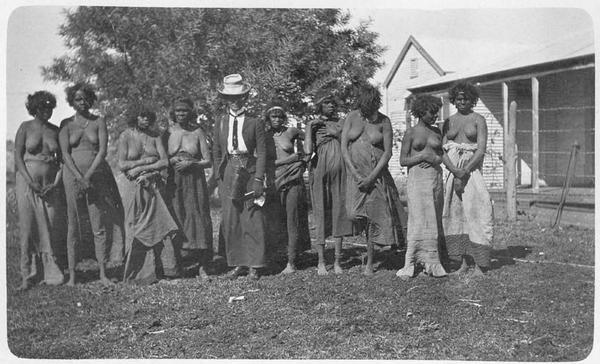
free university lectures online
braz
 3:18
3:18
| |||
|
............................. Boer war (Sth African) War Memorial1940 Australian troops in the desert.http://www.youtube.com/watch?v=QGhRQTPZYHQ&feature=video_response
Boer war (Sth African) War Memorial1940 Australian troops in the desert.http://www.youtube.com/watch?v=QGhRQTPZYHQ&feature=video_response

Please note: Some internet providers including Internet Explorer and even Firefox seem to delete aspects of my blogs. I have found only one, CHROME to be satisfactory.Please down load CHROME in a couple of minutes (free). thank you (Ric)

Blog Archive
see this acrobat girl video. she is the best!
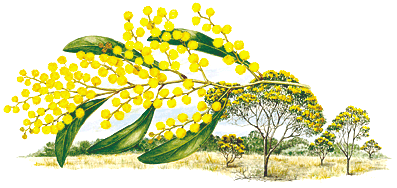


+copy.jpg)
+copy.jpg)






http://4.bp.blogspot.com/-t9Czg2O8Ybg/TZa7990_cfI/AAAAAAAAFYI/Uoxu-q4nPbQ/s1600/botany+bay.jpg
Tie me kangaroo down on the barbie.When he stops jumping, the steaks's ready.
Tie Me Kangaroo Down Sport - Sang by Rolf Harris 02:59


 http://www.creativemeat.com/tag/free-music-synthesizer/
http://www.creativemeat.com/tag/free-music-synthesizer/1. Wheel Hoss 2. Cluck Old Hen 3. RoundHouse 4. Dixie Hoedown | 09. Little Maggie 10. Feeling Low 11. Bluegrass Breakdown 12. Jerusalem Ridge |

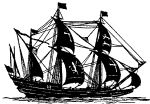


( You did a good job, gr gr gr gr grandma, and grandpa)
above: Braidwood, N.S.W. where my father Hector Williams was born
in Feb, 1909.









'Ric W
illiams, blog editor.
Welcome. Give your considered opinion, ideas , stories, photos etc about early pioneer Australia.. 'Ric Williams
|
- tubehttp://www.youtube.com/watch?v=159UzAx-Cw Aboriginal children singing.
Do you know?


Pub With No Beer - Slim Dusty 03:29
 The song made famous by the late Slim Dusty, was first written in the original Day Dawn Hotel in Ingham in north Queensland in 1943, by an Irish cane cutter Dan Sheahan, after some American soldiers drank the pub dry the previous night. > >
The song made famous by the late Slim Dusty, was first written in the original Day Dawn Hotel in Ingham in north Queensland in 1943, by an Irish cane cutter Dan Sheahan, after some American soldiers drank the pub dry the previous night. > >

The Sirius - the Sailing Ship Captain Arthur Phillip Travelled in to Australia.






| Sydney-Harbour Time Lapse Older Posts |
Ric Williams, blog editor Home
Welcome. If you disagree, tell me.
Ric Williams, blog editor Home
Welcome. If you disagree, tell me.
Noam Chomsky
Dutch, Allard map 1690.
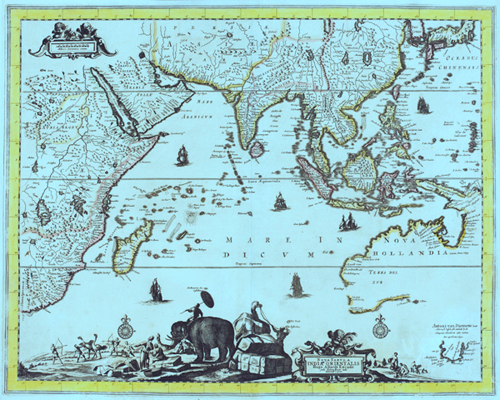
The Outback

PBS
Australia surf videos.
Australian Outback .
"Long before it's in the papers" RETURN TO THE WORLD SCIENCE HOME PAGE Move elephants into Australia, scientist proposes Feb. 1, 2012 Australia may need an infusion of elephants and other large mammals to solve its persistent ecological and wildfire problems, a scientist proposes. |
- Australian Outback I: the Red Centre.
- Australian Outback II: the North West.
- Australia Outback III: the North West after the wet season.
- Coober Pedy: as dry as it gets.
- Australian Deserts
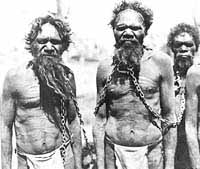
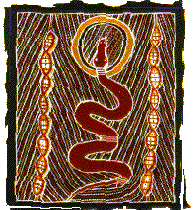
- Alice Springs Area
- Ayers Rock/Uluru
- Kakadu National Park
- Katherine Gorge
- The Kimberley Region
- Boabs
- Outback Australia Beaches: and you thought the Outback is all about deserts...
- More Australian Beaches
- http://www.cattledrive.com.au/


More about this author


The view west from Geilston Bay.Tas.July, 2010..click to enlarge.


very top...Painting of original first fleet leaving England in 1787 (Jonathan King)
http://radiotime.com/affiliate/a_33300/station/NPR_Radio_Stations.aspxnational public radio stations
This site works best with Chrome or Firefox.3:18
first fleet links
| first fleet rio de janeiro | first fleet convicts australia | first fleet 1787 | lady penrhyn first fleet |
hms sirius first f HMS Sirius, the main Naval ship with the First Fleet, under Captain John Hunter RN. Australian History resourcesl | first fleet settlers | scarborough first fleet | first fleet aborigines ANN MARSH by Judy Williams, a descendant. |
| http://www.members.optusnet.com.au/~aashmore , http://www.freewebs.com/daone89/index.htm  William Nash came to Australia as a Marine with the First Fleet 1788 | |
| 6 Children | 1. William Nash born on 25 May 1788, buried on Friday 19th June 1789, a marine's child. 2. John Nash baptised 15 Jan 1792 (a family source names him William) 3. Mary Nash born 2 March 1793 and baptised 2 April 4. William Nash born 27 March 1795 and baptised 4 May 5. George Nash born 26 July 1797 6. Sarah Nash was born 16 Nov 1798 |
| 6. Sarah Nash 16 Nov 1798 wed on the 15th January 1814 at St John's, Parramatta, to John Williams (a convict), 13 children | |
Bill Mayer. Screw Democracy.
Video results for bill mayer politically correct
|
|
http://www.timeanddate Home
EMAIL: cwok.williams6@gmail.com
(below:) Convicts on way to 14 years penal servitude in Botany Bay. England's loss was Australia's gain. Most had committed crimes that would get them now only a fine.
 |
| Wallace Street and Corner Store, Braidwood |
 2:03Changing of the Guard at Buckingham Palace.
2:03Changing of the Guard at Buckingham Palace.
|
|
- Don't take your love to town, by Ruby Langford Ginibi.
 ww.youtube.com/watch?v=UJgciC1j-r0
ww.youtube.com/watch?v=UJgciC1j-r0 |  |  |
John Kerswell: A Welsh plasterer transported in 1828 at the age of 20 years to 15 years for stealing. Absconding four times and charged with being drunk three times, granted ToL in 1856 and Conditional Pardon in 1857. However, he received 20 years imprisonment for attempting to stab a policeman. He was released from Port Arthur in 1875.
William Forster: At age 17 years was transported for ten years for stealing a box writing desk. Misdemeanour followed misdemeanour and sentence added to sentence until in 1864 he was sentnenced to life for robbery under arms. The last mention of him is in 1872 when he was sent to the Separate Prison for misconduct.
Alexander Woods: A soldier with the 17th Regiment, Aberdeenshire, Scotland, Woods (aged 30) was transported from Canada to Port Arthur for 14 years for desertion.
Returned to Hobart with a ToL in 1853 but returned to PA again in 1865 for 15 years for burglary. He was a church attendant in 1869 and was discharged in 1875.
ow ya goin' mate? Orright, eh? Ric Williams, blog editor Home
Ric Williams, blog editor Home
Welcome. If you disagree, tell me. Then I'll tell you why you're wrong.
 Ric Williams, blog editor Home
Ric Williams, blog editor Home
Welcome. If you disagree, tell me. Then I'll tell you why you're wrong.
u tube Australia.
Gropecunt Lane
Gropecunt Lane was a name used in Oxford, London and other Englishtowns and cities in the Middle Ages for streets where prostitutes conducted their business. The name derives from cunt, the Middle English term forfemale genitalia, and the act of groping. There was also a Gropecunt Lane inDublin, Ireland near where the Savoy Cinema is now. Later sensibilities changed many names of streets bearing this name to more polite variations.In London, the street that was Gropecunt Lane was near the present-day site of the Barbican Centre in the City of London. The street was called Grub Street in the 18th century, but renamed Milton Street in 1830 . Another street with a similar history in Southwark is Horselydown Lane ("whores lie down"), which is just to the south of Tower Bridge, and was also the site of the famousAnchor Brewhouse.
first Australians
First
Australians
Video
http://www.sbs.com.au/firstaustralians/
A newdocumentary
on the history of Australia
First Australians
Sydney slums of the 40's.
They start life’s race with a handicap



Sydney Downtown You Tube.
Short history of Australia
ow ya goin' mate? Orright, eh? Ric Williams, blog editor.
Ric Williams, blog editor.
Welcome. Give your considered opinion , ideas , stories, photos etc about early pioneer Australia.. Ric Williams
cwok.williams6@gmail.com
 Ric Williams, blog editor.
Ric Williams, blog editor.
Welcome. Give your considered opinion , ideas , stories, photos etc about early pioneer Australia.. Ric Williams

http://translate.google.com/#gle.com
http://english.aljazeera.net/
Australian videos online free.
vancouver time-lapse.
......................Homeless?  |
 Home........................................
Home........................................ Older Posts
Older Posts
Early Probate Records, NSW State Records: Web link
Australian Jewish Genealogical Society
First Fleet online (UOW)
Old Sydney Burial Ground
Norfolk Island Cemetery

1804 Battle of Vinegar Hill
1804 Battle of Vinegar Hill Memorial
Irish Convicts to New South Wales 1791-1834
NSW Death records
Early Australian Colonial History
Facebook - Early Colony history of NSW and Norfolk Island 1788 - 1820





| BIG SURF Bells BeachAustralia (HD) Uploaded by mcm0001 youtube.com |
| Official: Bondi Beach Gets Flipped! Towel ... Uploaded by theflip youtube.com |

Old houses West End Vancouver B.C.

Read Dallas Darling and other prominent thinkers.
The Aussie Attitude to religion.
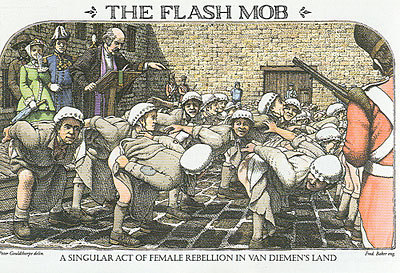
ic W
illiams, blog editor.
Welcome. Give your considered opinion, ideas , stories, photos etc about early pioneer Australia.. Ric Williams
Mongolia's wild horses.
Asset
The Australian
Australian Financial Review
Australian Geographic
Australian PC Authority
Australian Personal Computer
Australian Reader’s Digest
Better Homes and Gardens Australia
Bharat Times
Business Review Weekly
The Canberra Times
Dutch Courier
Green Left Weekly
New Dawn
News Weekly
Nichigo Press
Practical Punting Daily
Smart Investor
Smarthouse
Sydney Morning Herald
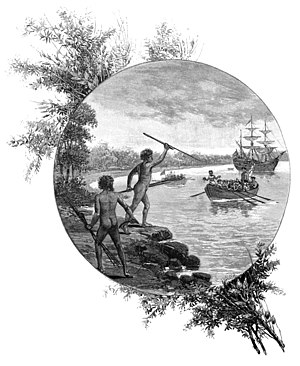 G
G
guitar tuning
Labels
- "They shipped us out for England's good." Thank goodness. (2)
- 2 views near park and church I know wel (Ric) (1)
- aboriginal stockgirl (cowgirl) Why are we sad? (2)
- and Exeter Church (1)
- and Prison Hulk (1)
- British artilliary at Sydney Cove "to stop the French." (1)
- but it did not last. (1)
- Clarke gang robbing coach (1)
- Coastal bush before settlement. (1)
- convicts' jail (1)
- culture crawl (1)
- Early Asian Contacts with Australia (1)
- Endeavour replica (1)
- first aborigines hunted and ate them to extinction. (1)
- First Fleet Flag-raising Aussie flag (1)
- Gaol Gang. (1)
- grandma Lucy Williams (nee) Pike...pure white (1)
- happiest days of my life (1)
- How lucky we were (1)
- http://members.ozemail.com.au/~yonkers/Meanwhile.html (1)
- http://www.warof1812.ca/punish1.htm (1)
- I am still fixing it up for grammar and spelling (1)
- I do my best (1)
- In England there was poverty. Soup Kitchen (1)
- Is this our relation? What was his crime? (1)
- Je demeurais dans l'est d' Hochelaga (1)
- Kyoto Buddhist Shrine .Nikko Narita Hotel. (1)
- Marjorie O'Keefe married Hector Griscom Williams (1)
- norman hardy painter...coaching in araluen valley. (1)
- O Glorious War. (1)
- Paintings by Albert N amatjira and others (1)
- prison hulk Southhampton (1)
- Rue Davidson (1)
- see "mapI Ireland 18th Century " google (1)
- see "old maps Wales" online (1)
- see Finder's voyage circum.A ust..Sulawesi natives (1)
- see more views"Our Williams Story"(Llanelly) (1)
- some were not in irons and many lived through the voyage. (1)
- Surry Hills Terraces .Enhanced by Ric.(venue Harp in the South) (1)
- The aborigines had no say. (1)
- the biggest one got away (1)
- There is nothing glamorous about pioneer Australia (1)
- They shipped us out for "England's good." . (1)
- to leave Britain. The hanging cart (1)
- Williams website (1)
View of Harbour...Cassis France.

Lolita, my heartthrob of the 60's.
Below: Light of my life, fire of my loins... The image that will never age: "Lolita"
(Stanley Kubrick, 1962).
much used internet sites
We come in Third with Williams.
Williams
is a patronymic form of the name William that originated in medieval England[2] and later came to be extremely popular in Wales. The meaning is derived from son or descendant of Guillemin, the French form of William. Derived from an Old French given name with Germanicelements; will = desire, will; and helm = helmet, protection.[3] It is the second most common surname in Wales and the third most common surname in the whole of the United Kingdom, the third most common in the United States of America and Australia and the fifth most common inNew Zealand.[4]Old Harry Williams was asked how was it that the long list of Williams lead by far those of Nash over the last couple of hundred years.
"Well, let's see.Them Nashes they was more posh and they kept the family bible, so we lot had nothing to read at night.There was no T.V. in them days, and we didn't want to waste candles, so we used to all jump in bed together and make more Williams's."
............................................................
Statistics are drawn from Australian government records of 2007.[1]
NASH 4487personshave name Nash in Australia
| # | Name | Number of people |
|---|---|---|
| 1 | Smith | 114,997 |
| 2 | Jones | 56,698 |
| 3 | Williams | 55,555 |
Australia. The first fleet sailed from England in 1787 carrying marine William Nash and his common law wife Maria Haynes. They were the progenitors of an extensive Nash family in Australia. Another early settler was Andrew Nash. He had acquired the Woolpack Inn in Parramatta in 1821 and became well-known for the prowess of his racehorses. A later settler from Wiltshire was James Nash. He discovered gold along the Mary river in Queenland and helped precipitate the second Australian gold rush.
There were also Nash convicts in Australia. Some thrived; Robert Nash, transported on the Albemarle in 1791; John Nash on the Eleanor in 1831; and Michael Nash from Limerick, on the Rodney in 1851.
final scene gallipoli

You are not just you.
 | Physics of the Impossible - by Michio Kaku.PDF 2981K View Download |
Videos for physics of the impossible...michio kaku
|
| ||||
|
Neither here nor there.
world population
world time and weather
Wild man of North Australia.
.jpg)

Toonoom Falls
Situated in the heart of Royal National Park to the south of Sydney, Toonoum Falls is a pretty, 5 metre high waterfall alongside Sir Bertram Steven Drive not far from the Garie turnoff. The photo shows the falls in flood.
Location: Royal National Park.

Aussie Little Nasties.
Lecture on Charles Darwin
Labels
- "They shipped us out for England's good." Thank goodness. (2)
- aboriginal stockgirl (cowgirl) Why are we sad? (2)
- . (1)
- Clarke gang robbing coach (1)
- Early Asian Contacts with Australia (1)
- Endeavour replica (1)
- Gaol Gang. (1)
- How lucky we were (1)
- Kyoto Buddhist Shrine .Nikko Narita Hotel. (1)
- O Glorious War. (1)
- Paintings by Albert N amatjira and others (1)
- Surry Hills Terraces .Enhanced by Ric.(venue Harp in the South) (1)
- The aborigines had no say. (1)
- They shipped us out for "England's good." . (1)
- Williams website (1)
- and Exeter Church (1)
- and Prison Hulk (1)
- convicts' jail (1)
- first aborigines hunted and ate them to extinction. (1)
- grandma Lucy Williams (nee) Pike...pure white (1)
- http://3.bp.blogspot.com/_IB98SVrY53k/Rj446yqDAGI/AAAAAAAAA8M/Mmgf2CyP234/s1600-h/devonshiretunnel1501.jpg (1)
- http://members.ozemail.com.au/~yonkers/Meanwhile.html (1)
- prison hulk Southhampton (1)
- see "mapI Ireland 18th Century " google (1)
- see "old maps Wales" online (1)
- see Finder's voyage circum.A ust..Sulawesi natives (1)
- see more views"Our Williams Story"(Llanelly) (1)
- some were not in irons and many lived through the voyage. (1)
- the biggest one got away (1)
- to leave Britain. The hanging cart (1)
new blogs


http://www.coraweb.com.au/local.htm
HMS Sirius, the main Naval ship with the First Fleet, under Captain John Hunter RN.
Had been built in 1780 as Berwick for the East Indies run, badly burned in a fire, and rebuilt by Navy, renamed Sirius, finally wrecked off Norfolk Island on the 14th. of April 1790.
 highlight
highlight 

*The Australian Lyre Bird is the world's best imitator; able to mimic the calls of 15 different species of birds in their locality and string the calls into a melody. Also been known to mimic the sound mobile phones.
*The echidna is such a unique animal that it is classified in a special class of mammals known asmonotremes, which it shares only with the platypus. The echidna lays eggs like a duck but suckles its young in a pouch like a kangaroo. For no apparent reason, it may decide to conserve energy by dropping its body temperature to 4 degrees and remain at that temperature from 4 to 120 days. Lab experiments have shown that the echidna is more intelligent that a cat and it has been seen using its spikes, feet and beaks to climb up crevices like a mountaineer edging up a rock chimney.
*Purple wallaby - The Purple-neck Rock Wallaby [Petrogale Purpureicollis], inhabits the Mt Isa region in Northwest Queensland. The Wallaby secretes a dye that transforms its face and neck into colours ranging from light pink to bright purple.
*The Fierce Snake or Inland Taipan has the most toxic venom of any snake. Maximum yield recorded (for one bite) is 110mg. That would probably be enough to kill over 100 people or 250,000 mice.
*The Wombat deposits square poos on logs, rocks and even upright sticks that it uses tomark its territory.
*A 10kg Tasmanian Devil is able to exert the same biting pressure as a 40kg dog. It can also eat almost a third of its body weight in a single feeding.
*Australia is the smallest, flattest, and driest inhabited continent in the world. It is the only country which is also a whole continent.
*Over 90% of Australia is dry, flat and arid. Almost three-quarters of the land cannot support agriculture in any form.
*A baby kangaroo at the time of its birth measures 2 centimetres.
birth of joey http://zzz262.multiply.com/video/item/1831
*Kangaroos need very little water to survive and are capable of going for months without drinking at all. When they do need water, they dig 'wells' for themselves; frequently going as deep as three or four feet. These 'kangaroo pits' are a common source of water for other animals living in the kangaroo's environment.
http://www.youtube.com/watch?v=Y1GxAPXrUCQ
Kangaroo attacks dog, man. ^
*A kangaroo being chased by a dog may jump into a dam. If the dog gives chase, the kangaroo may turn towards the dog, then use its paws to push the dogs head underwater in order to drown it.
*Emus and kangaroos cannot walk backwards, and are on the Australian coat of arms for that reason.
*A monotreme is a animal that lays eggs and suckles its young. The world's only monotremes are the platypus and the echidna.
*The male platypus has a poisonous spine that can kill a dog and inflict immense pain on a human.
*When a specimen of the platypus was first sent to England, it was believed the Australians had played a joke by sewing the bill of a duck onto a rat.
*Box Jelly fish - The box jellyfish is considered the world's most venomous marine creature. The box jellyfish has killed more people in Australia than stonefish, sharks and crocodiles combined.
*The Sydney Funnelweb spider is considered the world's most deadly spider. It is the only spider that has killed people in less than 2 hours. Its fangs are powerful enough to bite through gloves and fingernails. The only animals without immunity to the funnelweb's venom are humans and monkeys.
*Lung fish - Queensland is home to lung fish, a living fossil from the Triassic period 350 million years ago.
u tube Australia.
Convicts
*It is estimated that by the time transportation ended in 1868, 40 per cent of Australia's English-speaking population were convicts.*A census taken in 1828 found that half the population of NSW were Convicts, and that former Convicts made up nearly half of the free population.
*In 2007, it was estimated that 22 per cent of living Australians had a convict ancestor.
*Convicts were not sent to Australia for serious crimes. Serious crimes, such as murder, rape, or impersonating an Egyptian were given the death sentence in England.
*Crimes punishable by transportation included recommending that politicians get paid, starting a union, stealing fish from a river or pond, embezzlement, receiving or buying stolen goods, setting fire to underwood, petty theft, or being suspected of supporting Irish terrorism.
* Alcohol- It has been reported that the first European settlers in Australia drank more alcohol per head of population than any other community in the history of mankind.
* Police force - Australia's first police force was a band of 12 of the most well behaved Convicts.
* Mass moonings - In 1832, 300 female Convicts at the Cascade Female Factory mooned the Governor of Tasmania during a chapel service. It was said that in a "rare moment of collusion with the Convict women, the ladies in the Governor's party could not control their laughter.


The arrival of the Lady Juliana at Sydney Cove.
 | |
The arrival of the Lady Juliana at Sydney Cove. |
 | |
Ann Marsh managing her company, the Parramatta River Boat Service. |
|
|
| God & the Origin of Life: Myth of the Organic ... Uploaded by OriginofLifeFinal video.google.com |
| Origin of Life 1. Life Came From Other Planets ... Uploaded by Sarastarlight youtube.com |

History of Australia in brief.
|
George Carlin
http://www.youtube.com/watch?gl=CA&v=B6AZvtUEQS0
Conspiracy or painful Truth?
Top Topics:
Front Page
Conspiracy Of Silence
Political Art
Anthrax Attacks
Inside Job
Leahy Vs Ashcroft 2004/06
McMedia
Patriot Act
Building 7 Collapse
Guardian
Muslims Suspend Physics
Latest Headlines
Ongoing Coverup
AirForce Standdown
Coverup By White House
Flight 77 Black Boxes
Flights
InHis Own Words
Insider Trading
Open And Fair Trials
Pentagon Attack Cctv Video
Prior Knowledge
Osama Bin Asset
Bin Laden
Bin Laden Confession
Cia Visas For Patsies
Experienced Skeptics
Hijackers Alive And Well
Hijackers Patsies
Pentagon Attack
Flight 77
Flight77Sites
Pentagon Attack Damage
Pentagon Attack Debris
Pentagon Attack Fire
Pentagon Attack Legend
Pentagon Mascal
Pentagon Plane Rotor
Pentagon Strike
Flight 77 Patsies
Flight 77 Witnesses
Killtown
Pentagon Attack Hole
Pentagon Attack Videos
Pentagon Attack WitnessBlast
Sept 11 WebSites
Grable,Rosalee
Trusted News Sites
Twin Towers
Whats Next
News:
9/11 Ommission TortureAct
Essays:
Bogus War On Terrorism
Viewpoints:
Conspiracy Of Silence
Mirrors:
geocities.com/killtown
elitewatch.netfirms.com
lightscion.com
baltech.org/lederman
angieon911.com




















.jpg)




















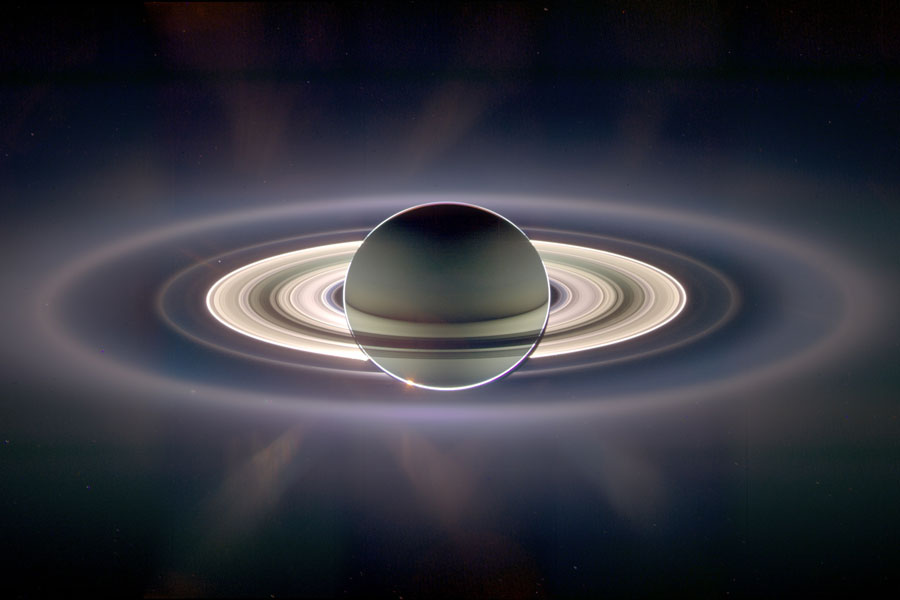
No comments:
Post a Comment